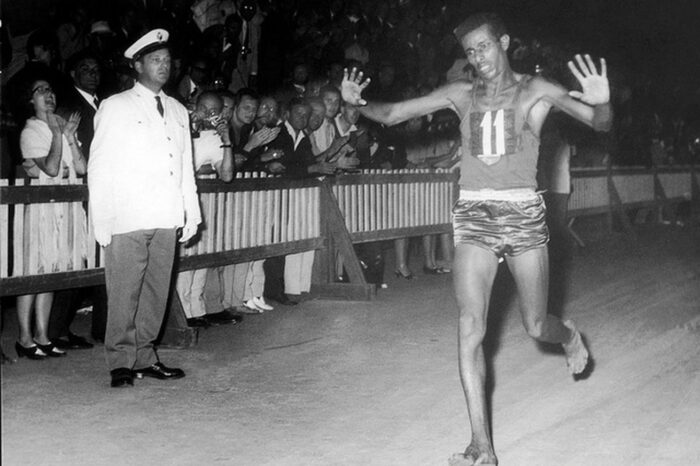Political turmoil gets reported daily with breathless anticipation and wide-eyed horror.
It’s good to remember that America’s United States that we believe in are united by thin threads and that those threads have always been thin.
How thin was that thread when one Senator beat the dog shit out of another on the Senate floor?
Sumner collapsed in the aisle, but Brooks did not stop.
Blood had soaked most of Sumner’s coat and shirt, and his shirtsleeves were bloodied from the strikes on his raised arms.
Finally, New York Representatives Ambrose Murray and Edwin Morgan rushed in.
As they struggled to restrain Brooks, Senator John Crittenden of Kentucky ran up the aisle shouting, “Don’t kill him!”
Finally pausing, Brooks replied, “I did not intend to kill him, but I did intend to whip him.”
Brooks was arrested shortly afterwards but immediately freed by friends on a $500 bond.
When his case saw trial, he was merely slapped on the wrist.
For his weapon, Brooks selected a gutta-percha cane with a gold head and a hollow core.
The cane itself was deeply symbolic—men used them to “discipline unruly dogs”—but also practical.
With two parties facing each other over the gulf of disagreement, one side seems stronger.
Does that mean the other side is weaker, ill-informed, blinded by the audacity of the other?
Or, are we missing something in the history mirror?
Good School, Bad School
It’s a comfort knowing that both sides come from similar educational backgrounds.
But, not so much when Harvard guys seems to forget the educational advantages they benefit from by dipping down for votes from their constituents.
In politics the voters need to hear what they want to hear from the candidate no matter where they went to school.
So how do people from the same educational backgrounds justify themselves to their voters?
They make personal connections to assure them that they are both the same, cut from the same cloth, that they share the same values.
One side is doing a better job of it than the other, and it’s not because of an educational advantage.
It’s more a willingness to band together and stand together behind the ideology of their president with strong ideas on how to govern.
Even further, their strength of unity shows when they accept each new idea as better than the last.
The latest shocking idea reported in wide-eyed horror is moving money from established and beneficial government programs by cutting staff, or cutting entire departments in the name of fiscal responsibility.
Based on their Ivy League credentials and their performance in front of cameras, voters see their guys as golden on one side, and below standard on the other.
How can one side be below standard? They’re not.
The portrayal comes from a news cycle that hammers issues and policies from one side better than the other.
One side works to be accountable to its voters, the other works to win.
The success rate is evident with win after win at national and local levels.
Go ahead and tip your hat to that strategy. It works.
Alternate facts, or not, the end result is pretty impressive.
Big Questions In The History Mirror
With the huge numbers reported from redundancy and fraud investigations by the current administration the big questions are about where the money goes.
The 1950’s and 1960’s are portrayed as high tax hell for corporations and top income earners.
The government collected the money and dispersed it for projects like the interstate highway system and going to the moon, and the Vietnam War.
Big projects needed big money.
Currently the big money is reported as going to tax breaks for corporations and big earners to meet their obligations.
So, ask yourself: If you were a top earner heading a leading corporations, where would you aim the savings from tax breaks?
Would you invest in the community you operate in?
Give your workers a sweeping raise?
Would the money trickle down from the board room tables to the kitchen tables?
Or, would you invest in political parties, foundations, action groups, and candidates with the notion of influencing more tax break savings?
Good businessmen with strong instincts know the answer: follow the money, ride the market, push for more.
If the national voting trends break down to one third voting one way, another third voting the other way, and the final third not voting for anything, where should the money go?
One Reflection In The History Mirror
When you first go to school you learn to listen, to be still and let others hear the teacher.
If you don’t, you go to the office and they call your parents.
When you join a team you learn what to do, how to function, by listening and following directions.
If you don’t, you might not make the team.
When you join the Army, it’s not much different.
Ask me how I know.
Eventually it becomes second nature, and with it grow expectations from others.
While you sit in quiet solitude, watching for when to speak up, things can clear up in the history mirror.
Do both sides benefit from tax breaks?
Are candidates as a whole dipping into the bank of tax breaks?
Donations to congressional campaigns come from four main sources: political action committees or PACs; large individual contributions of more than $200; small individual contributions of $200 or less; and money from the candidates’ own pockets.
“Other” includes things like dividends, interests and any earned income.








Speak Your Mind